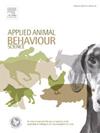Traditional aquaculture farming conditions favour the development of maladaptive traits of reared fish. The hatchery releases are a crucial part of the population recovery action in sturgeon species. The manipulation of the environment could be one of the solutions to increase welfare and thus make the fish more adaptable to the changing post-release environment. The objective of our study was to compare the zootechnical parameters and behaviour of young sterlets Acipenser ruthenus reared in different culture conditions. Hatchery-like or bare (CRTL) and environmentally enriched (EE) conditions with small gravels were provided in duplicates in four aquariums. Following the rearing period, spatial exploration behaviour, swimming activity, stress coping, and boldness were analysed in different cross-maze tests. A bare maze was used with the absence of physical enrichment for the first test whereas for the second test, the environmental complexity was increased with the same type of gravel used in the rearing period. The fish from the EE conditions showed significantly lower mortality and greatersurvival (72.2 ± 2.9% vs. 89.2 ± 1.8%; P < 0.001, χ2 test) during the rearing period. Although they were significantly smaller throughout rearing, the EE fish did not have worse condition compared to the CTRL fish. The esults also showed significantly better stress coping under different circumstances and elevated exploration behaviour assuming higher boldness in EE fish. In summary, the present study highlights the potential beneficial effects of using environmental enrichment on survival, behaviour and the overall welfare of juvenile sterlets.


